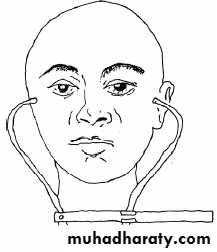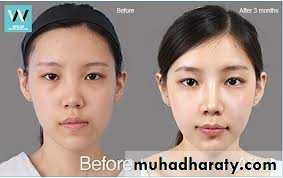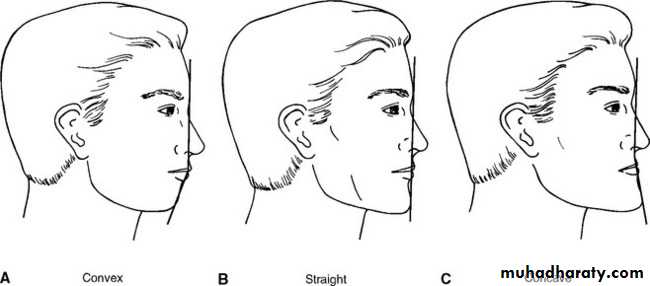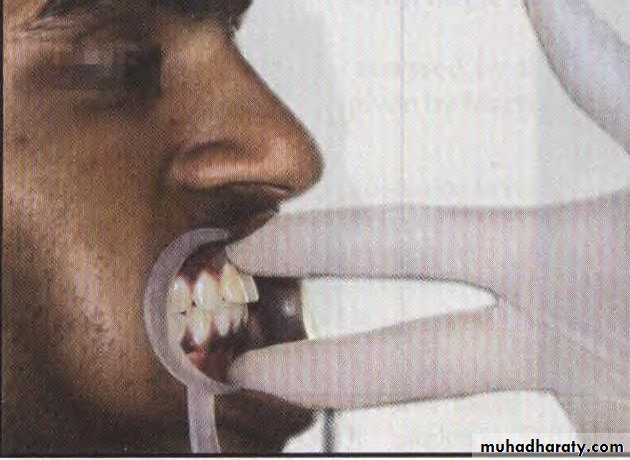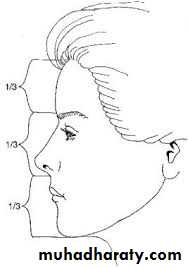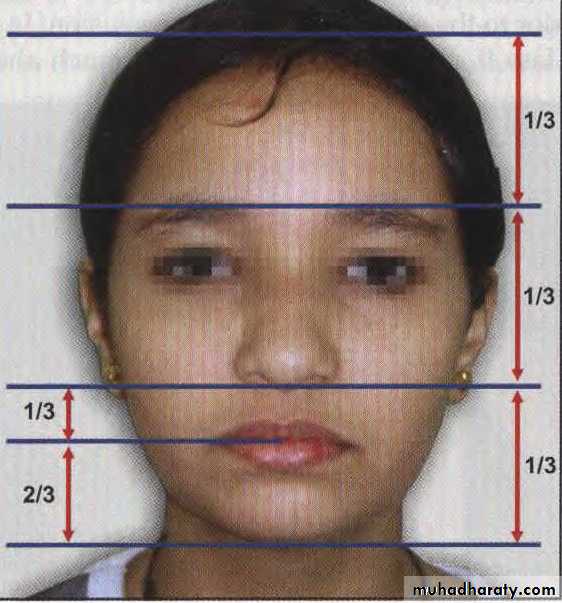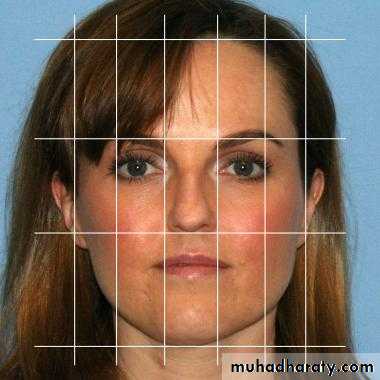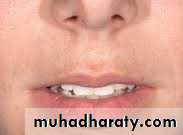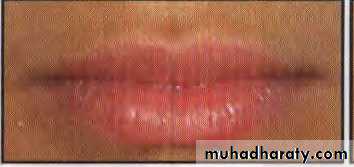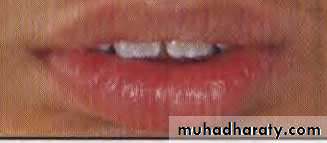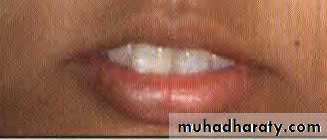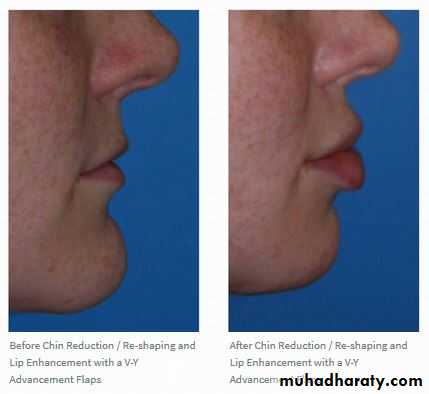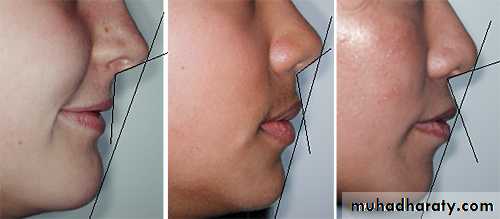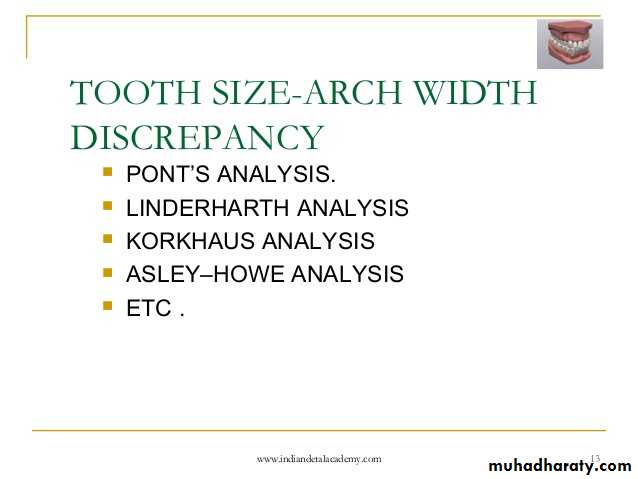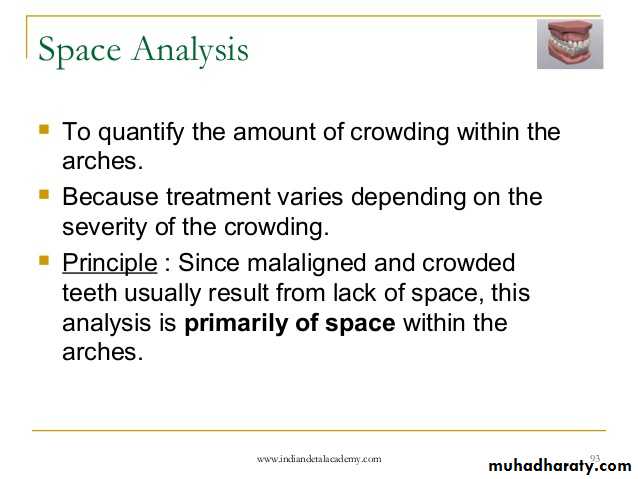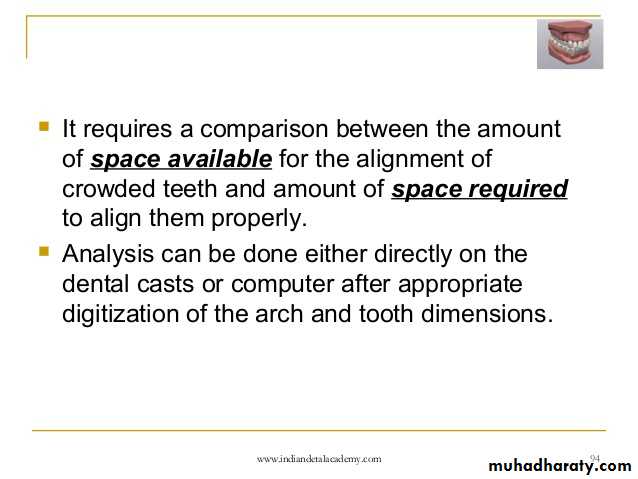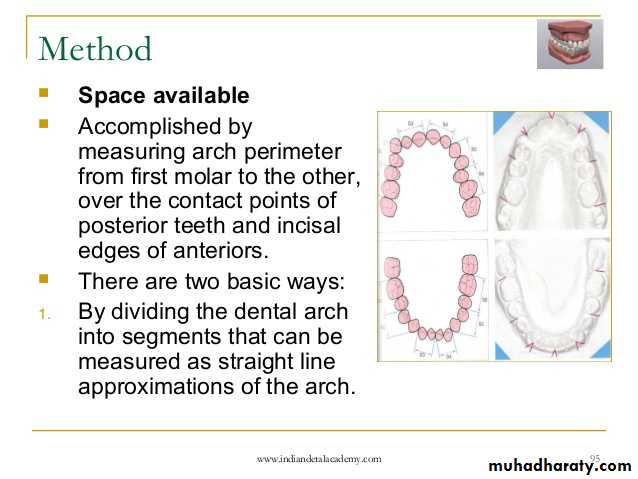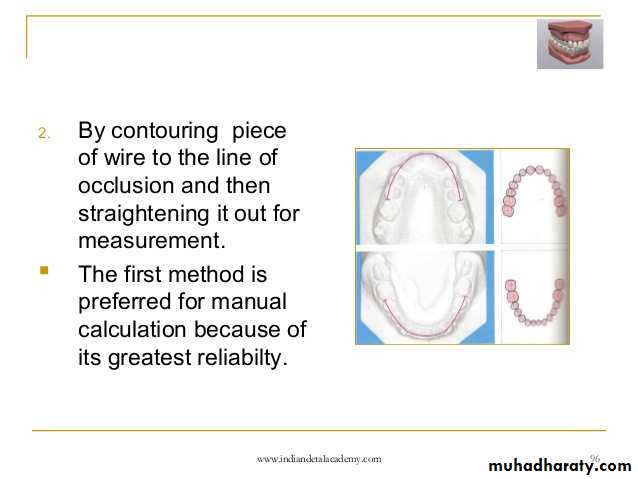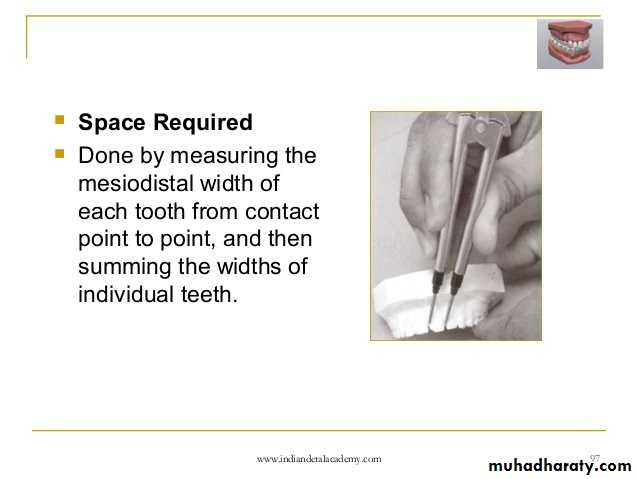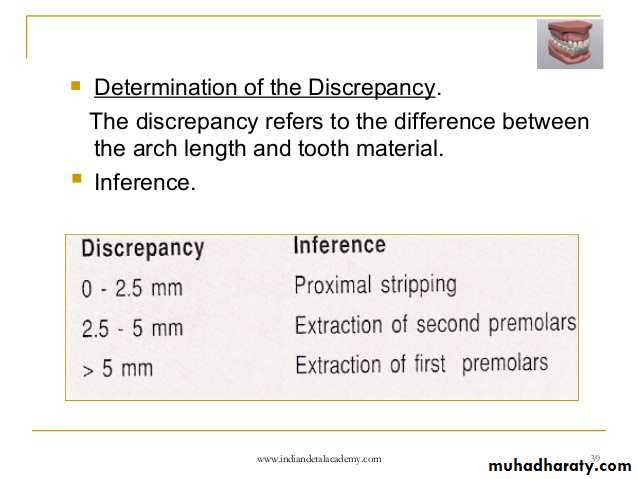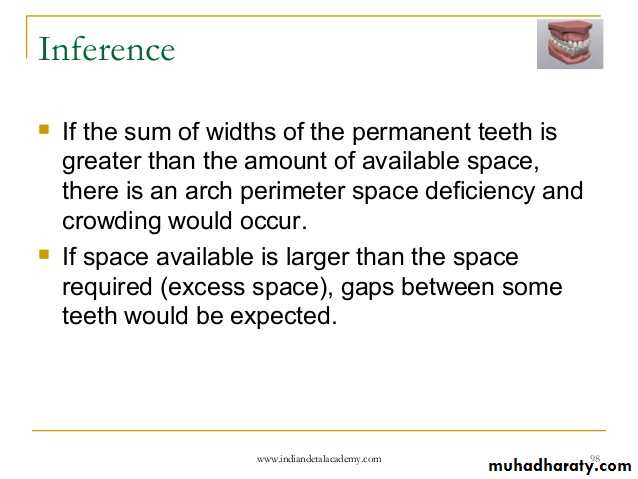بسم الله الرحمن الرحيم
Diagnosis
In diagnosis and treatment planning, the orthodontist must:
recognize the various characteristics of malocclusion and dentofacial deformity;
define the nature of the problem, including the etiology if possible;
design a treatment strategy based on the specific needs and desires of the individual;
present the treatment strategy to the patient in such a way that the patient fully understands his/her decision.
Overbite is the vertical overlap of the incisors.
Overjet is the horizontal distance between upper and lower incisors.Anterior open bite is failure of incisors to meet in maximum intercuspation.
Overbite and Overjet
Ideal occlusion
Mal posed tooth
Increase overjet
Cephalic Examination
Maximum skull width
I = ــــــــــــــــــــــــــــــــــــــــــــــــــــــــــــــــ
Maximum skull length
• Mesocephalic (average)
skull)
Assessment of Facial Symmetry
Morphologic facial height (distance /./nasion &gnathion)I = ـــــــــــــــــــــــــــــــــــــــــــــــــــــــــــــــــــــــــــــــــــــــــــــــــــــــــــــــ
Bizygomatic width (distance /./zygoma points)
Orthodontic directions for treatment
Sagittal (mesial-distal)Vertical (deep bite, open bite)
Transversal (narrow)facial asymmetry
Gross facial asymmetries may be seen in patients with:1. Hemifacial hypertrophy / atrophy
ii. Congenital defects.
iii. Unilateral condylar hyperplasia
iv. Unilateral Ankylosis, etc.
Hemifacial hypertrophy / atrophy
II. Congenital defectsiii. Unilateral condylar hyperplasia
iv. Unilateral Ankylosis
Facial Profile
Clinically or in extraoral photographs, the profile can be obtained by joining two reference lines:a. Line joining forehead and soft tissue point A
b. Line joining point A and soft tissue pogonion.
Assessment of antero-posterior jaw relationship
placing the index and middle fingers at the approximate A and B points after lipretraction. Ideally, the maxilla is 2 to 3 mm anterior to the mandible in centric occlusion
Assessment of vertical skeletal relationship
The role of fifth
if we divide the face vertically into 5 equal parts (fifth), we can observe that the nasal width should be approximately equivalent to the width of each eye.Examination of the Soft Tissues
Lips : Lip length, width and curvature should be assessed. In a balanced face, the length of the upper lip measures one-third, the lower lip and chin two thirds of the lower face height. The upper incisal edge exposure with the upper lip at rest should be normally 2 mm.Lips can be classified into:
a. Competent lips: Slight contact of lips when musculature is relaxed.b. Incompetent lips: Anatomically short lips, which do not contact when musculature is relaxed. Lip seal is achieved only by active contraction of the orbicularis oris and mentalis muscles.
c. Potentially competent lips: Lip seal is prevented due to the protruding maxillary incisors despite normally developed lips
d. Everted lips: These are hypertrophied lips with redundant tissue but weak muscular tonicity
Everted lips
NASOLABIAL ANGLE
Study Models
Orthodontic study models are essential diagnostic records, which help to study the occlusion and dentition from all three dimensionsThe importance of study models
1. They are the only three dimensional records of the patient's dentition.
2. Occlusion can be visualized from the lingual aspect.
3. They provide a permanent record of the intermaxillary relationships
5. They serve as a reminder for the parent and the patient of the condition present at the start of treatment.
6. In case the patient has to be transferred to another clinician, study models are an important record.

























